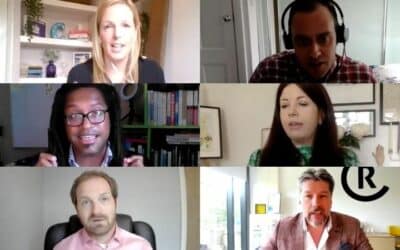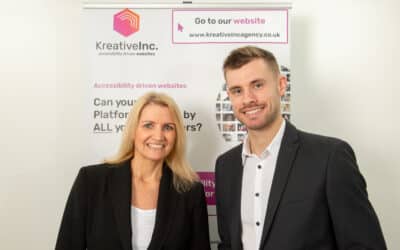Since the introduction of the Equality Act thirteen years ago, very little progress has been achieved in bridging the gap so that disabled people have their needs met. Here, Ellen Cole, founder, public speaker and accessibility expert at York-based Little Seed Group, explains why.
According to the 2010 Equality Act, organisations must remove the barriers to accessing their products and services. This is so that people with visible and invisible disabilities can access them in the same way that a non-disabled person can.
Let’s explore what steps businesses need to take to be more inclusive and how to include accessibility as part of wider marketing strategies.
The Case for accessibility
Disabled people in the UK make up around 20% of the population and according to The Purple Pound Report, the disability community has an annual spending power of £274 billion. Globally, this figure works out at approximately $13 trillion and is predicted to continue to increase year-on-year for the foreseeable future.
Hypothetically speaking and interpreting this in its simplest form, if an organisation was able to tap into just 0.0001% of the annual UK spending power of the disabled community through their marketing communications, this would result in a return of £274,000, which would be a positive economic outcome for many small to medium-sized businesses.
Unfortunately, organisations’ lack of understanding and reluctance to make meaningful change is why three-quarters of disabled people turn away from businesses that don’t offer them a positive customer experience.
Poor accessibility results in poor business presentation generally, therefore organisations have a sound financial reason and legal duty to dismantle business barriers both on and offline, to improve customer confidence and loyalty.
Simply placing a ramp in front of a tightly crammed shop or adding an accessibility toolbar onto an already inaccessible website will not do the trick! The needs of disabled customers are complex, which is why education and a willingness to continuously learn from those with lived experience of being disabled are key.
There are several different categories of disabilities including (but not limited to):
- Auditory disabilities: examples include deaf, hard of hearing
- Cognitive disabilities: examples include Autism, ADHD which is sometimes referred to as ADD, Dyslexia and Dyspraxia
- Neurological disabilities: examples include Epilepsy, Seizures, Irlen Syndrome and Dementia
- Physical disabilities: examples include Cerebral Palsy, MS, Amputation and Arthritis
- Visual disabilities: examples include blind, low vision, visual impairment
All disabilities need to be factored in when crafting a marketing plan, however, organisations must not feel knocked back if they don’t get it right straight away. It is a learning process, and the key is to listen to feedback and to implement accessibility changes in a timely manner so that all your customers feel valued and appreciated.
Delving into digital accessibility
Digital technology has become an integral part of everyday consumer life. This means businesses must embrace new and evolving technology to attract, engage and convert customer leads into sales. Despite the continuous advancement of technology, the same cannot be said about digital accessibility which is still very much in its infancy.
The most recent research reveals that: 70% of UK websites are inaccessible (The Business Disability Forum) whilst 80.4% of social media content is inaccessible (WebAims). These figures evidence that digital inclusion has remained mostly stagnant over the last 13 years, and drastic action needs to be taken to greatly improve accessibility online.
Skills gaps in digital accessibility are one of many reasons why online inclusion hasn’t improved; this hasn’t been helped by the unconscious bias employers show against disabled applicants, who are some of the most disadvantaged people in society in terms of securing employment.
Many disabled people will have vast experience using assistive technology online; attributes and skills that employers need to make their digital content more accessible. Software which is new but familiar to them includes text-to- speech specialist keyboards, screen readers, assistive listening devices, magnifiers, and voice recognition software to name just a few.
Although assistive technology has made it straightforward for disabled people to access digital content, it is far from perfect. This is why disabled people and those with invisible differences need to have a voice when it comes to devising marketing plans. Those with lived experiences can prevent organisations from ignoring 1 in 5 buyers online to develop economic growth.
There are many ways in which organisations can improve accessibility online, but the recommended first step would be to have an open and honest conversation with disabled people about their interactions/experiences with your online content so that you can create a barrier-free experience.
Some foundational steps that businesses can take to get started on their accessibility journey would be:
- Alt texting images on their websites and social media channels
- Publishing high colour contrast graphics
- Structuring content, including breaking it down into smaller sections and organising the information on the page
- Implementing keyboard navigation
- Including captions and transcripts
- Adding clear and concise descriptions to URLs and call to actions
- Enabling users to increase font sizes
Although making the above changes will help organisations to become more digitally inclusive, getting started on your accessibility journey with an accessibility expert or agency with lived experience will always be the best route to take. Real-life experience provides organisations with unparalleled insight as they will have first-hand knowledge and advice.
Although there is currently year-on-year growth of shopping online, accessibility is just as important offline. Research shows, for example, that transport providers lose £42 million a month whilst UK high street shops miss out on £267 million each month due to poor accessibility practices.
Businesses looking to pursue greater accessibility need to implement changes throughout every area of their business model to retain and appeal to existing and new customers. Yet again, listening to feedback from customers and working with them as the new processes are added is crucial, however it is important to raise concerns about physical accessibility with your local authority to ensure they are doing their bit to make travel to your premises as barrier-free as possible.
Accessibility for the future
Accessibility needs to play a vital role in the future of businesses if they wish to tap into the huge spending power of the disability community. This can only be achieved through creating a barrier-free environment which is why accessibility needs to have a core role in every aspect of the business, both traditional and digital.
It is estimated that only 10% of UK organisations have a marketing plan which targets disabled people, which means many organisations are missing out on an opportunity to increase business revenue.
So, creating accessibility both on and offline will not just benefit organisations financially, but offers a prime opportunity to develop and sustain long-term relationships with disabled customers. This is not only a necessity in terms of equality and accessibility but may become crucial for businesses to adapt to in an ever-evolving world.











